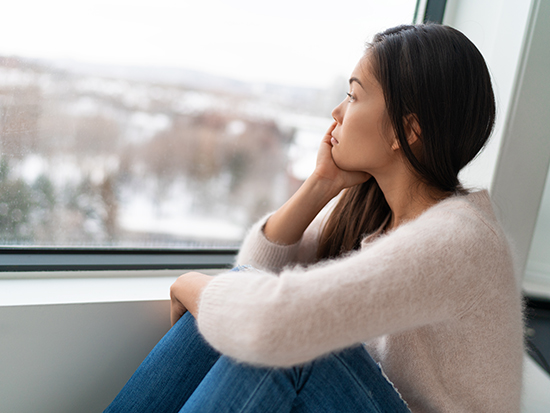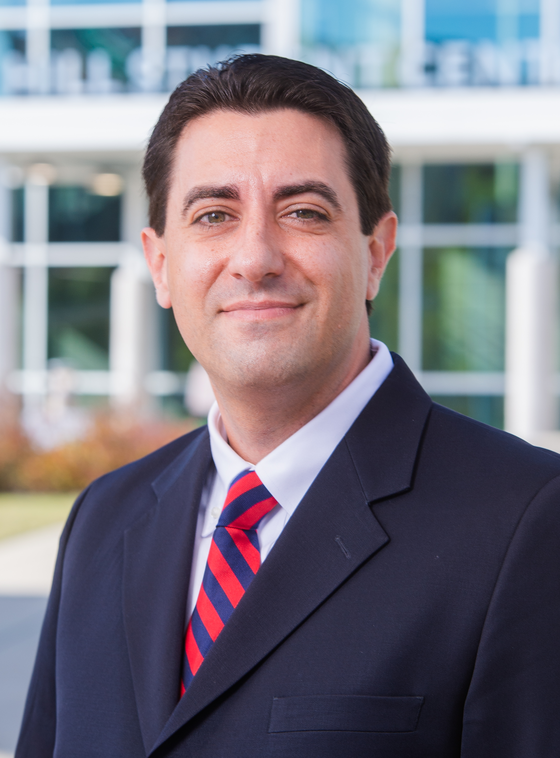Media contact: Brianna Hoge
 Expert at UAB sheds light on the mental health phenomenon that casts a shadow over the colder months. As the days grow shorter and temperatures drop, many people find themselves feeling unusually down and lethargic. This condition, known as seasonal affective disorder, affects millions each year, casting a shadow over the colder months.
Expert at UAB sheds light on the mental health phenomenon that casts a shadow over the colder months. As the days grow shorter and temperatures drop, many people find themselves feeling unusually down and lethargic. This condition, known as seasonal affective disorder, affects millions each year, casting a shadow over the colder months.
Matthew Macaluso, D.O., professor and vice chair for Clinical Affairs in the Department of Behavioral and Neurobiology at the University of Alabama at Birmingham, says understanding symptoms and treatments of SAD can help those affected.
SAD, also referred to as major depressive disorder with seasonal pattern, is characterized by low mood, sleep disturbances, appetite changes, low energy, anxiety and withdrawal from normally enjoyable activities.
“It’s important to point out that any mood episode, including seasonal depression, can be associated with thoughts of suicide, death or self-harm, which could be a medical emergency,” Macaluso said.
The National Institute of Mental Health says SAD is suspected when symptoms last four to five months out of the year. As with other mental health conditions, seasonal mood changes are influenced by biological, psychological and social factors.
Learn more about UAB Cares, a suicide prevention initiative, here.
“Biologically, changes in daylight affect circadian rhythms and neurotransmitter levels, impacting mood, energy and sleep,” Macaluso said. “Specifically, heritable genetic factors linked to the dopamine and serotonin system seem to raise the risk for developing seasonal depression.”
He says that, psychologically and socially, holidays like Thanksgiving, Christmas and Hanukkah can trigger stress and anxiety, potentially contributing to seasonal depression. The exact relationship between negative thoughts and seasonal depression remains unclear.
SAD is diagnosed through a medical evaluation to rule out other conditions, such as thyroid disease. Mental health providers conduct diagnostic interviews to assess symptoms, stressors, thought patterns and medical history.
 Matthew Macaluso, D.O.
Matthew Macaluso, D.O.
Photography: Lexi Coon“By considering biological, psychological and social factors, a physician can make a syndromal diagnosis of seasonal depression,” Macaluso said. “Because there are no biological markers to independently confirm a diagnosis of any mental disorder, depression included, all psychiatric diagnoses are made by clinical history and patient, sometimes family, interviews.”
Treatment options for seasonal depression include antidepressants, light therapy, vitamin D supplements and psychotherapy, like cognitive behavioral therapy. Providers customize treatment plans to target specific patient needs or factors.
“Diagnostic interviews help providers understand a patient’s presenting symptoms, stressors and thought patterns, as well as their past medical and psychiatric history,” Macaluso said.
He recommends light therapy as a non-invasive treatment option to be considered in cases of season depression. Light therapy usually involves sitting close, 6-12 inches or as directed by a health care provider, to a special light source every morning for at least 30 minutes.
Light therapy provides 10,000 lux of light each morning, mimicking natural light. Providers should advise patients on how to use a light box, ensuring it indirectly reaches patient’s eyes at a 45-degree angle and without being blocked by glasses or contacts.
Learn more about the Department of Psychiatry and Behavioral Neurobiology’s suicide prevention and recovery here.
“Studies show light therapy can improve melatonin and cortisol release, addressing underlying physiological changes,” Macaluso said. “Some providers recommend light therapy for non-seasonal depression as an augmentation strategy, and other literature recommends midday light exposure in addition to or instead of early morning. Each patient should receive guidance from their treating provider on whether or how to use light therapy.”
Macaluso says that, in cases of treatment resistance, involving a psychiatrist or other trained mental health professional is generally advisable.
To make an appointment at the UAB Department of Psychiatry and Behavioral Neurobiology, call 205-934-4107 or click here. For more mental health resources at UAB, click here.